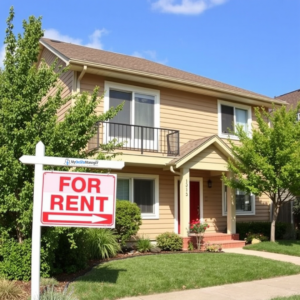The U.S. housing market is currently facing a paradox: while there’s a well-documented shortage of affordable housing, the nation is experiencing a surplus of luxury apartments that remain unoccupied. This imbalance highlights the challenges within the housing sector and underscores the need for a more strategic approach to residential development.
The Rise of Luxury Apartments
In recent years, real estate developers have heavily invested in constructing high-end multifamily units. These upscale apartments, often equipped with premium amenities such as rooftop pools, fitness centers, and high-end finishes, command average monthly rents of approximately $2,139. However, this focus on luxury has led to an oversupply, with the national vacancy rate for these high-end units reaching 11.4%, double that of more affordable housing options.
Developers have prioritized luxury units for several reasons. First, they offer higher profit margins, making them an attractive investment. Second, regulatory and zoning constraints often make it easier to build high-end apartments rather than affordable housing. Lastly, the perception that affluent renters would drive sustained demand led to an overestimation of market needs.
Regional Disparities in Vacancy Rates
The oversupply issue is particularly pronounced in certain regions. Sunbelt cities, such as Austin, Texas, have experienced vacancy rates as high as 15% for luxury apartments. To attract tenants, landlords in these areas are offering significant concessions, including two to three months of free rent on a one-year lease, effectively reducing rental costs by up to 25%.
Meanwhile, cities like New York, Boston, and Chicago have maintained lower vacancy rates and are witnessing rising rents. New York City, for instance, boasts a vacancy rate of just 2.8%, making it one of the tightest rental markets in the country. This trend is attributed to limited new construction in these areas between 2021 and 2024, leading to a scarcity of available units. The difference between these regions highlights how local market conditions and construction trends impact rental demand and occupancy rates.
Impact of High Mortgage Rates
Elevated mortgage rates, hovering around 7%, have made homeownership less attainable for many Americans. Consequently, more individuals are opting to rent for extended periods. Despite this increased demand for rental housing, the market’s response has been skewed towards high-end developments, leaving a significant gap in affordable housing options.
For many middle-class and lower-income renters, the influx of luxury apartments does not translate to greater housing accessibility. Instead, they are often left competing for a limited supply of moderately priced units, driving up costs in that segment. Furthermore, the rise in mortgage rates has placed additional pressure on potential homebuyers, many of whom are forced to continue renting despite their desire to purchase a home.
The Need for Affordable Housing
The current focus on luxury apartments has not addressed the pressing demand for affordable housing. In the last quarter of 2024, only 6,700 units with average monthly rents of $1,332 were under construction nationwide, compared to nearly half a million higher-end apartments. This disparity underscores the necessity for developers and policymakers to prioritize affordable housing solutions to meet the needs of a broader population.
Developing affordable housing is not without challenges. High construction costs, land prices, and regulatory hurdles make building lower-cost units less attractive to developers. Additionally, many municipalities have restrictive zoning laws that limit the construction of affordable housing units. Policymakers must address these barriers by offering incentives for developers, such as tax credits, subsidies, and relaxed zoning regulations, to encourage the construction of more affordable housing.
Potential Solutions to the Housing Imbalance
To address the luxury apartment glut while simultaneously tackling the affordable housing crisis, several solutions should be considered:
- Incentivizing Affordable Housing Development: Local governments can provide tax credits, low-interest loans, and grants to developers who commit to building affordable units.
- Zoning Reform: Cities should consider rezoning areas to allow for mixed-income developments, enabling a more diverse range of housing options.
- Repurposing Luxury Apartments: Some luxury apartment owners are converting vacant units into co-living spaces or offering reduced rents to attract middle-income tenants.
- Public-Private Partnerships: Collaborations between government agencies and private developers can lead to innovative housing solutions that benefit both parties while addressing affordability concerns.
- Expanding Rent Control Measures: In cities experiencing extreme rental price increases, temporary rent controls can help prevent displacement and stabilize housing costs.
Conclusion
The oversupply of luxury apartments amidst a shortage of affordable housing highlights a critical misalignment in the U.S. housing market. While high-end developments have dominated new construction, many Americans continue to struggle to find affordable places to live. Addressing this issue requires a concerted effort from developers, policymakers, and local governments to shift focus towards the development of affordable housing units. By implementing strategic incentives and reforms, the housing market can move towards a more balanced and inclusive future.
Source: The U.S. Has More Fancy Apartments Than It Is Able to Fill

